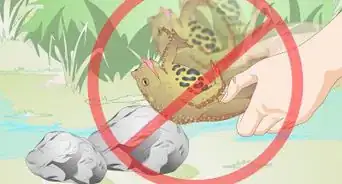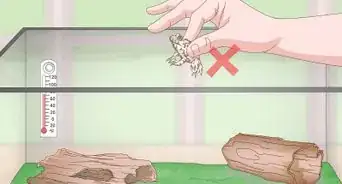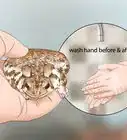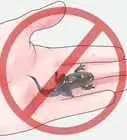This article was co-authored by Audra Barrios. Audra Barrios is a Marine Biologist and owner of Lick Your Eyeballs, a business offering experiemces, reptiles, supplies and plants. With over 15 years of experience, Audra specializes in reptiles and exotic animals, environmental education, marine biology, conservation issues, and animal husbandry. Audra earned a BASc in Marine Biology from the University of California, Santa Cruz, and studied Natural Sciences at the College of Marin. She is the founder and Executive Director of Things That Creep, a non-profit dedicated to herptile conservation through education. She has spent the last nine years working as a biologist at the California Academy of Sciences.
There are 25 references cited in this article, which can be found at the bottom of the page.
wikiHow marks an article as reader-approved once it receives enough positive feedback. In this case, several readers have written to tell us that this article was helpful to them, earning it our reader-approved status.
This article has been viewed 80,959 times.
Toads are amphibians that you can find all over the world. Toads come in many sizes. They even have “warts” on their bodies.[1] You might want to catch a toad to keep it as a pet, but might find it difficult because they are often hard to find. You can find toads, though, by checking their habitats and distinguishing them from frogs.
Steps
Locating Toad Habitats in Your Area
-
1Scope out typical habitats for toads. You can find toads in most parts of the world except in the South Pacific and polar regions. They are most common in tropical areas.[2] Toads like gardens, fields, streams, and ponds. Toads often like dark, damp places that allow them to hide. Take some time to look for places where you might find toads including:[3]
- Berry patches
- Window wells
- Trees[4]
- Under leaves
- Sand
- Lawns
- Gardens
- Pools of water such as ponds, streams, lakes, and reservoirs
- Forests
- Meadows
- Under rocks and logs
-
2Check places where toads may find food. Toads eat a variety of foods including insects, worms, and snails.[5] Looking for toads in the places where their food sources are may help you find them more easily.
- Look for worms in rich, soft soil. Rain causes worms to come to the surface and this may be an optimal time to check for them—and toads. You may also want to check for worms and toads under old boards, bricks, logs, or debris where the soil is moist.[6]
- Find snails in shaded areas, when it is cloudy outside, or at night. Make sure you look for snails and the toads that like to eat them in cooler areas.[7]
Advertisement -
3Search during active times of the day. Toads are mostly nocturnal. They also prefer darker spaces to rest in during the day. Looking for toads when they are most active during the day may help you more successfully find and capture them.
- Check for toads in the late afternoon, early evening, and nighttime. You may also find them if you search in the early morning.
- Look for toads under things such as leaves, logs, and rocks if you search for them during the day.
-
4Keep the time of year in mind. Toads, like many amphibians, may hibernate during the winter. Though not all species of toad hibernate, most will burrow below the frost line in the winter. Searching for toads according to the time of year can make you more successful in your hunt.[8]
- Look for toads in the forest and woodlands, grasslands, yards and gardens during the summer.
- Check below the frost line during the winter and early spring. You may also find toads at the bottom of lakes, concealed in logs, or tucked into leaf piles.[9] You may even be able to find some toads swimming under ice in the winter.
-
5Attract toads to your yard or garden. If you prefer to not go on a large expedition to find toads, you can easily find them in your yard or garden. Setting up your yard or garden with water features and places to hide can attract toads that you can then catch.[10]
- Add a small water feature to your yard. You could have a pond or small fountain. Make sure to not use any chemicals in the water feature because they may harm toads.
- Set up a toad abode or adobes where toads can hide, preferably near a shady place or water source. You can easily create an abode yourself by turning a ceramic flower pot upside down. If it doesn’t have a crack or hole in the side, prop it up with a rock to let the toad get in and out. The abode doesn’t need a bottom because toads like to dig. You can also make an abode out of a pile of rocks.[11]
- Plant perennials with large leaves such as Bergenia or Ligularia. Make sure to not use chemical pesticides in your yard or garden as this can harm toads and decrease their food supply.
-
6Contact your local county extension. If you are having trouble finding toads or attracting them to your yard, call or visit your local county extension. The county extension can provide you information on the types of toads in your local area and where you might find them. The county extension can also suggest what to plant and how to fertilize your garden without chemical pesticides that may deter or harm toads.[12]
- Locate your local county extension at http://npic.orst.edu/pest/countyext.htm.
Capturing Toads You Find
-
1Figure out why you are catching the toad. People have different reasons for wanting to catch toads. It might be to keep them as pets for life or it might even be to get rid of invasive or poisonous species such as Bufo toads. Knowing your reasons for catching a toad can ensure that you treat toads in the most humane way. Ask yourself the following questions:
- Am I willing to support a healthy environment for toads to help get rid of insects in my yard?
- Can I commit to taking care of my toad for its life, knowing that it could be up to 15 years? Can I afford the supplies and food?[13]
- Am I prepared to humanely euthanize invasive toads on my property? Is this better left to a professional?[14]
-
2Get materials for a trap. You can easily trap toads on your property or in other wilderness areas. Having your materials ready can help you quickly build your trap and look for toads. Get the following items:
- 24 ft. of 18-inch wide aluminum window screening or 15 ft. of 28-inch wide screening
- 15 ft. of 36-inch wide fiberglass screening
- 25 ft. of string or small rope to make handles
- Utility knife and scissors
- Stapler with 1000 staples[15]
- Small fish net or other container if you prefer to catch toads with your hands[16]
- Glow stick or outdoor light, that can attract insects toads like to eat. A 12 volt black light insect tube may be the most effective at attracting insects.[17]
-
3Build your trap. You can purchase traps for amphibians, including toads. But they might not work as well as a trap you make. Using your materials, build the trap(s) and place where toads live.[18]
- Cut the aluminum window or fiberglass screening in a large rectangle. Then roll it into a cylinder that is 18” x 8” around. Make a 1” lip at the top by rolling the 18” end toward the other end. Staple the lip where it meets the cylinder screening. This will keep the cylinder and lip together. Staple every ½” to hold the cylinders together.
- Place the light or glow stick at one end of the of the cylinder and cover it with shade cloth or plastic. Leave the other end open for toads to enter the trap.[19]
-
4Place the traps near bodies of water. The most effective place to put your traps is near a body of water. If it is winter, when some toads hibernate, then place the traps near refuges such as plant beds.[20]
- Place the trap near non-flowing, water source like a swamp, pond, or vernal pool in the summer and spring.[21]
- Put the trap near burrows and wooded areas in the late spring and early summer.
-
5Monitor the traps. Check to see if you’ve trapped any toads within 24 hours of setting the traps. If you didn’t catch any toads, keep checking the trap until you find a toad in it.[22]
- Use a plastic bag or jar with pinholes or a bucket of water to transfer your toad to its new home.
- Release other animals in the trap back into the wild.
-
6Net a toad. You may want to actively catch a toad using a net instead of traps. Look for the toads in the same places that you would place traps. Take a light or glow stick to attract the insects that toads eat.[23]
- Put on a pair of waterproof shoes or boots so that you can walk through mud or water.
- Sweep the net through the water, hoop first, through the water when you see a toad you’d like to catch. You’ll have to be quick so that you don’t miss it.
-
7Avoid touching irritant secretions. There are many myths about toads giving humans warts by touching their skin. You can’t get warts by touching the skin of toads, but you may expose yourself to other irritants. Many toads have a so-called bufotoxin on their skin, which protects them from predators. It can cause death to other small animals and irritation to human skin. If you’re going to catch the toad you found, use a net or a pair of gloves so that you minimize the risk of skin irritation with a bufotoxin.[24]
Recognizing Toads
-
1Identify the basic characteristics of toads. You’ve located a spot to find toads and considered your motives, and now you’re ready to get your toad. It’s a good idea to know what traits identify toads. Some typical characteristics of toads are:
-
2Observe different species of toads. Most toads have the same basic characteristics. However, there are 300 different species of toads across the globe. They can vary in size and color. Figuring out what species may be in your area can help you locate toads and even find unusual species.[27]
- Check with your local or national wildlife agency for toad species that you can find near you. For example, if you live in Western Europe, you might find the common midwife toad.[28] If you’re in Madagascar, you might find the rare red Dyscophus antongilii.[29] People in the Americas may find giant or cane toads.[30] You can also find these in Australia.[31]
-
3Distinguish toads from frogs. You might spot a toad that doesn’t match any basic characteristics. You may have found a frog instead. All toads are frogs, but not all frogs are toads. This can be confusing! Ask yourself the following questions if you are unsure if you found a toad or a frog:[32]
- Where does the toad live? Frogs and toads live in similar places, but frogs may live in trees. You won’t find any toads climbing trees.
- Is my toad chubby or slim? Toads are chubbier than their frog cousins. They have shorter back legs, which are good for hopping on the ground, or walking and crawling. Toads may be slightly slower and less active than leaping frogs.
- What do my toad’s feet look like? A toad won’t have webbed feet or sticky pads on its toes. Frogs have webbed hind find and some may have webbed front feet. Some frogs have pads on their toes to help them climb trees.
- What does my toad’s skin look like? Frogs have smooth and moist skin. Toads have drier skin that feels rough and has warts.
Community Q&A
-
QuestionWhat time of day do toads sleep in their burrows?
 Community AnswerToads are nocturnal, meaning they come out at night to hunt. They'll be sleeping in their burrows all day.
Community AnswerToads are nocturnal, meaning they come out at night to hunt. They'll be sleeping in their burrows all day. -
QuestionCan I find toads in the daytime?
 MarlsbadCommunity AnswerYou can, but they're going to be more active in the evening.
MarlsbadCommunity AnswerYou can, but they're going to be more active in the evening. -
QuestionCan I find a toad in my pond?
 Community AnswerYes, but they usually like to hide in plants.
Community AnswerYes, but they usually like to hide in plants.
Warnings
- Avoid snatching a toad from its home unless you plan to keep it permanently.⧼thumbs_response⧽
- Make sure to get the permission of the owner of the property on which you want to catch toads.⧼thumbs_response⧽
- Avoid picking up a toad with your bare hands, as they will immediately begin to urinate.⧼thumbs_response⧽
References
- ↑ http://www.naturehaven.com/Frog/toad.html
- ↑ http://www.naturehaven.com/Frog/toad.html
- ↑ http://www.birdsandblooms.com/blog/attract-toads-to-your-backyard/
- ↑ http://www.naturehaven.com/Frog/toad.html
- ↑ http://www.dnr.state.mn.us/reptiles_amphibians/frogs_toads/toads/american.html
- ↑ http://dnr2.maryland.gov/fisheries/Documents/kidsfindingbait.pdf
- ↑ http://www.snail-world.com/where-do-snails-live/
- ↑ http://www.dnr.state.mn.us/reptiles_amphibians/frogs_toads/toads/american.html
- ↑ http://amphibianrescue.org/2011/01/19/brrr…it’s-cold-outside-how-do-frogs-and-toads-survive/
- ↑ http://www.nwf.org/Garden-For-Wildlife/Wildlife/Attracting-Amphibians.aspx
- ↑ http://www.birdsandblooms.com/blog/attract-toads-to-your-backyard/
- ↑ http://npic.orst.edu/pest/countyext.htm
- ↑ http://www.birdsandblooms.com/blog/attract-toads-to-your-backyard/
- ↑ http://kb.rspca.org.au/What-is-the-most-humane-way-to-kill-a-cane-toad_299.html
- ↑ http://www.ohioamphibians.com/salamanders/monitoring/Pond-breeding/traps.html
- ↑ http://scholarship.richmond.edu/cgi/viewcontent.cgi?article=1014&context=biology-faculty-publications
- ↑ http://www.canetoads.com.au/volmanual.htm
- ↑ http://www.ohioamphibians.com/salamanders/monitoring/Pond-breeding/traps.html
- ↑ http://www.canetoads.com.au/volmanual.htm
- ↑ http://www.canetoads.com.au/volmanual.htm
- ↑ http://www.anapsid.org/sallies.html
- ↑ http://www.canetoads.com.au/volmanual.htm
- ↑ http://scholarship.richmond.edu/cgi/viewcontent.cgi?article=1014&context=biology-faculty-publications
- ↑ https://www.nwf.org/Wildlife/Wildlife-Library/Amphibians-Reptiles-and-Fish/Toads.aspx
- ↑ http://www.birdsandblooms.com/blog/attract-toads-to-your-backyard/
- ↑ http://www.naturehaven.com/Frog/toad.html
- ↑ http://allaboutfrogs.org/weird/general/frogtoad.html
- ↑ http://www.iucnredlist.org/details/55268/0
- ↑ http://www.iucnredlist.org/details/6937/0
- ↑ https://www.invasivespeciesinfo.gov/aquatics/canetoad.shtml
- ↑ https://www.environment.gov.au/biodiversity/threatened/key-threatening-processes/biological-effects-cane-toads
- ↑ http://frogsaregreen.org/whats-the-difference-between-a-frog-and-a-toad/
About This Article
Although toads exist all over the world, they can often be hard to find. Look for toads in gardens, fields, streams, ponds, and anywhere dark and damp. Toads like to eat worms, snails, and insects, so if you can find a place with lots of these, you might spot a toad nearby. Head out between late afternoon through early morning, since toads are mostly nocturnal creatures. You should also look during the warmer seasons, as many toads hibernate through the winter. If you want to attract toads to your garden, add a water feature or pond. They might come for a drink! For more tips, including how to build a trap to catch toads, read on!
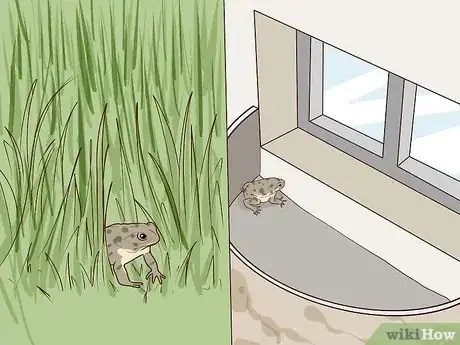


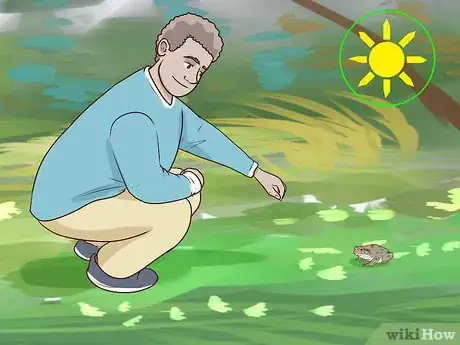

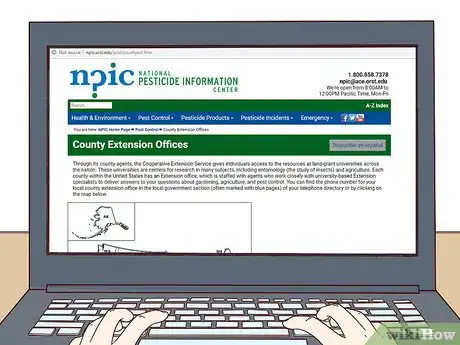

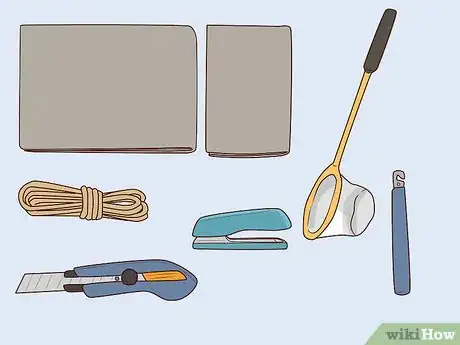
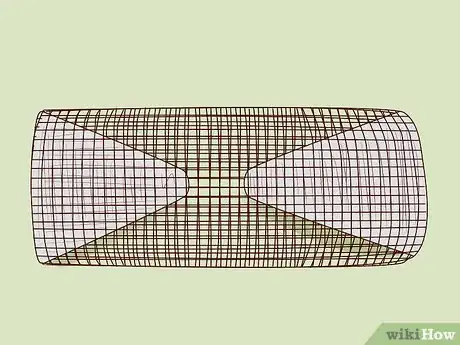
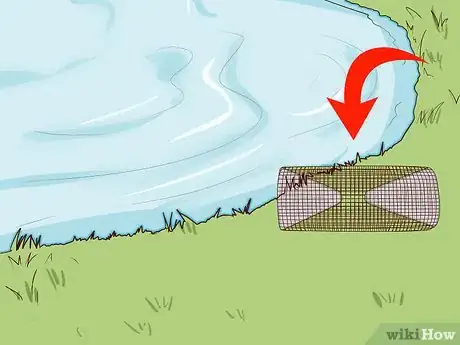

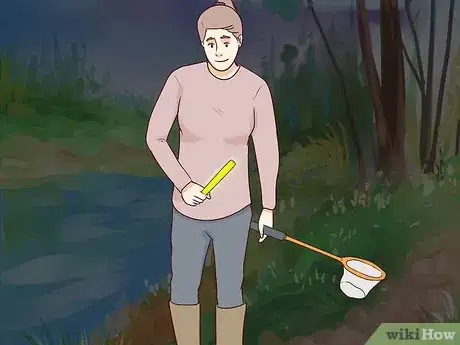

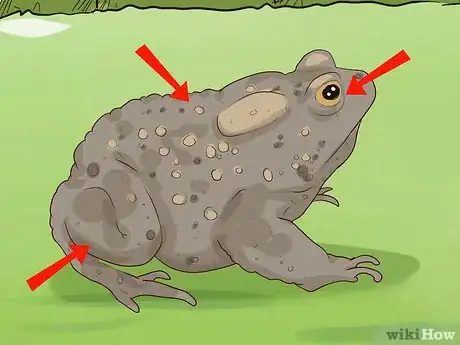
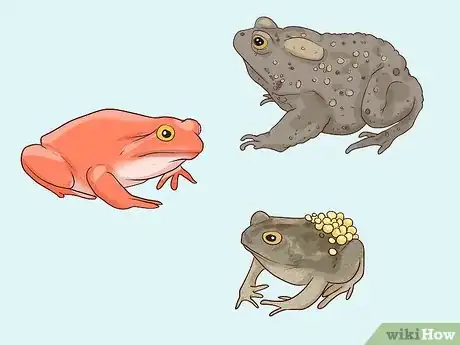
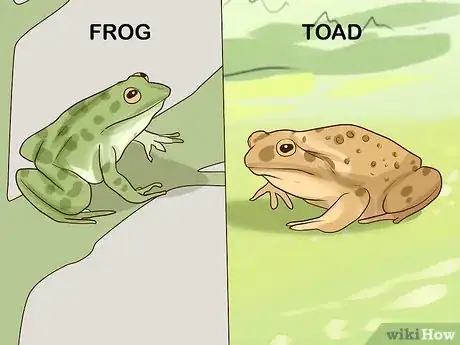
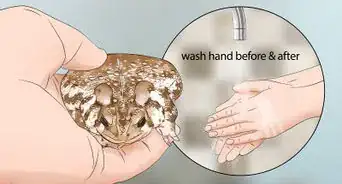
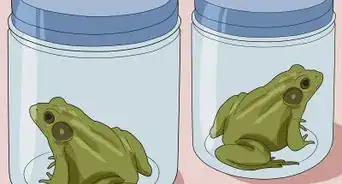

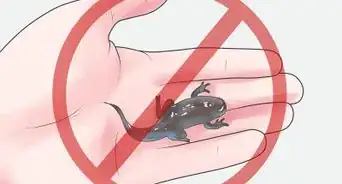
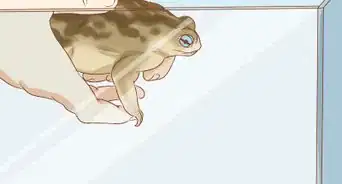
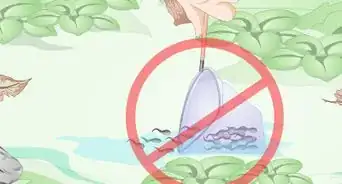

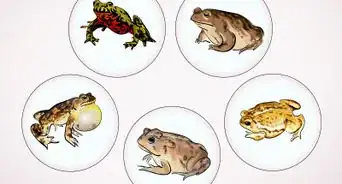
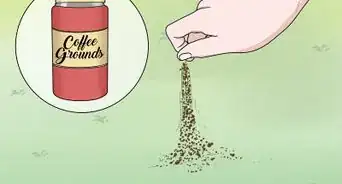
-Step-4.webp)
